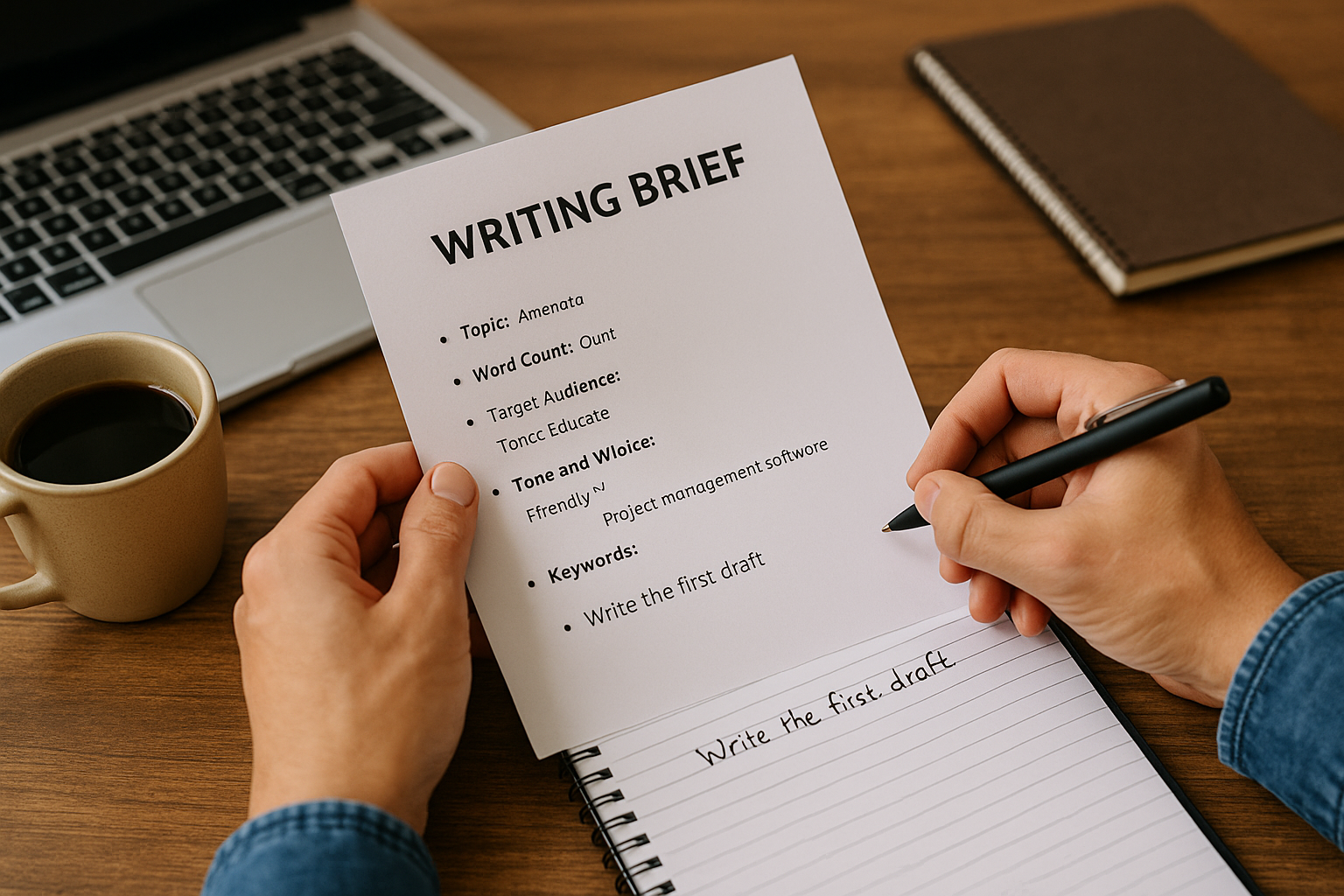One of the most important skills every freelance writer must master is turning a client brief into a compelling, accurate, and goal-driven piece of content. A brief is essentially your map — and when used properly, it helps avoid misunderstandings, revisions, and frustration on both sides.
In this guide, you’ll learn what a writing brief is, how to analyze it effectively, and how to use it to write content that meets — or even exceeds — client expectations.
What Is a Brief?
A brief is a document or instruction from the client that outlines what they expect from a piece of content. It can range from a few bullet points in an email to a full creative document.
A typical writing brief may include:
- Topic and title
- Word count
- Target audience
- Tone and voice
- Keywords (for SEO)
- Internal/external links
- Formatting guidelines
- Goals (e.g., educate, convert, entertain)
The more detailed the brief, the easier it is to deliver exactly what the client wants.
Why the Brief Is So Important
Ignoring or misreading a brief leads to:
- Multiple rounds of revisions
- Confused messaging
- Missed deadlines
- Frustrated clients
On the other hand, following a brief properly:
- Saves time
- Improves client satisfaction
- Boosts your reputation and referrals
Clients love writers who “just get it” — and that begins with the brief.
Step-by-Step: How to Analyze a Brief
Step 1: Read It Twice
Before writing a single word, read the entire brief carefully. Then read it again.
Step 2: Break It Down Into Categories
Make notes under these common areas:
- Objective: What’s the goal of this piece?
- Audience: Who are you writing for?
- Tone/Voice: Should it be professional, friendly, humorous, etc.?
- Key Points to Include: Are there specific facts, products, or messages?
- Keywords and SEO Requirements: Any specific keyword density, formatting rules?
- References: Any articles or examples to follow?
Step 3: Ask for Clarification if Needed
If something is unclear — a vague headline, missing details, contradictory tone — don’t guess. Send a short, professional message requesting clarification.
Example:
“Hi [Client Name], I just reviewed the brief and had a quick question about the audience demographic — is this content targeted at beginners or industry professionals?”
Step 4: Build a Custom Outline Based on the Brief
Creating a clear outline helps:
- Stay focused on the goal
- Hit all required points
- Deliver clean structure
Example Outline:
- Introduction (what the article is about)
- Problem overview
- Solution (highlighting product/service)
- Benefits and examples
- Conclusion with a call to action
Map each section to the brief’s key points.
Step 5: Write With the Brief in Sight
Keep the brief open as you write. Refer back regularly to ensure you’re:
- Staying on-topic
- Using the correct tone
- Including required keywords or links
Step 6: Self-Review Using the Brief
Before submitting, re-read the brief and ask:
- Did I cover every point requested?
- Did I maintain the right tone?
- Did I meet the word count range?
- Did I include required keywords and links?
Check everything off as you review your final draft.
Common Mistakes to Avoid
- Guessing the audience tone: Always confirm if it’s not stated clearly.
- Missing SEO elements: If a keyword is required, include it naturally.
- Skipping brand voice: Review the client’s website or provided examples to match their style.
- Overwriting: If they asked for 800–1,000 words, don’t submit 1,500.
- Ignoring update notes: If the client updated the brief mid-project, apply those changes before submitting.
Pro Tip: Create Your Own Briefing Template
When clients don’t provide a clear brief, you can send them a simple form to fill in. This helps you get all the necessary info before starting.
Sample Brief Template:
- What is the goal of this content?
- Who is the target audience?
- What keywords or phrases should be included?
- What tone should be used?
- Are there any examples you like?
- Are there specific links, products, or messages to highlight?
- Preferred word count?
This makes you look professional and reduces miscommunication.
Final Thoughts: Your Map to Client Success
A writing brief isn’t a burden — it’s your blueprint. Writers who know how to follow and interpret briefs are seen as dependable, detail-oriented professionals.
Next time you receive a brief, don’t rush into writing. Pause, study it, and treat it like a strategy guide. When your content matches what the client had in mind — or is even better — they’ll trust you again and again.

mwdeqq
selhkj
lvmii0
7cgn59